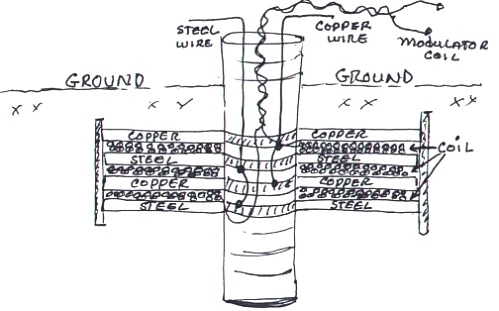Categories: Featured Articles » Interesting Facts
Number of views: 17,623
Comments on the article: 1
Stubblefield Earth Battery
 October 26, 1896, a 35-year-old native of the American city of Murray, Kentucky, self-taught experimenter, farmer Nathan Beverly Stubblefield applied for a new patent. This patent was supposed to be the third patent of the inventor after the two previous ones.
October 26, 1896, a 35-year-old native of the American city of Murray, Kentucky, self-taught experimenter, farmer Nathan Beverly Stubblefield applied for a new patent. This patent was supposed to be the third patent of the inventor after the two previous ones.
Previous patents were for a lighter for kerosene lamps and a mechanical telephone, which he received several years ago. In this case, the subject of patenting was a special electric battery, an earth battery. The inventor took a rather original approach to using a volt pair as the basis for creating a new class of current source.
As you know, the galvanic effect occurs when a galvanic pair is immersed in moist earth or water, which allows electricity to be supplied to an external circuit of very low power.
It was not possible to get a significant current from such a source because of the large internal resistance of the volt cell, it was possible only to measure the potential difference of the source, or it was necessary to connect several low-power elements in parallel to obtain more power.
The inventor set himself the task of creating such a battery, a completely new class, which would not only be able to give a considerable current to the load, but could also induce voltage in the secondary coil to power, for example, a microphone or relay coil.
The battery was a structure in which two conductors located side by side were galvanic pairs, one of which was iron and the other copper. The copper conductor was insulated, and the iron conductor was bare. This made the interaction of conductors with electrolyte optimal.
Wires were wound around an iron core located in the center of the battery frame. Winding was carried out as follows. Two wires were laid side by side, layer by layer, until the frame was bounded by wooden sides. After winding each layer, a layer of insulating fabric was laid; the same layer of fabric was located around the central core. As a result, the conductors in the assembly alternated all the time, being nearby.

The assembly was immersed in a container of water, and the electrodes were brought out to connect working devices. It was enough to just put the battery in wet ground, which is why Stubblefield called it the “earthen battery”.
The modification of such a battery also included a secondary winding, which was located on top of the winding, forming a galvanic pair. The secondary winding had to be insulated with material like mica. When the electrodes of the galvanic pair were closed and opened, an induction current appeared in the secondary winding, which could be used to power the devices.

Battery performance was maintained as long as the design remained moist. In addition to the ability to power the device, the design could be used as an electromagnet, for the operation of which it was enough to close the electrodes of the galvanic pair brought out to each other.
The inventor used such batteries in his experiments on wireless telephone communications.
See also at bgv.electricianexp.com
:
